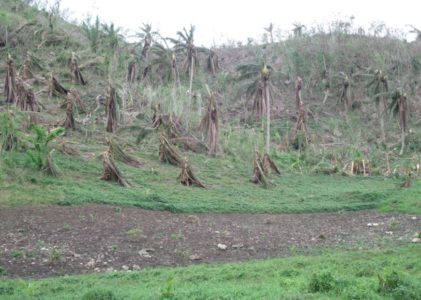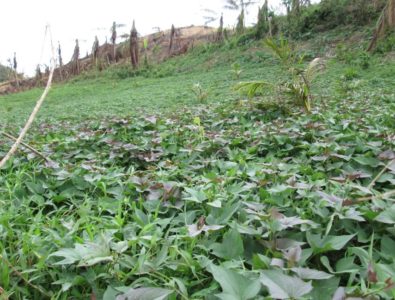Observed annually on October 13, International Day for Disaster Reduction is a celebration of global communities’ resilience in the face of natural or man-made disasters, as well as an attempt to draw attention to steps that need to be taken to bolster food security, infrastructure and more.
In the face of more powerful storms resulting from a globally changing climate, potato and sweetpotato take on additional layers of significance on both fronts.
Through its Food Security Through Asian Root and Tuber Crops (FoodSTART) project across Southeast Asia, CIP is working with partners to promote roots and tubers’ role in promoting greater food resilience.
As CIP’s Philippines office learned firsthand in November 2013, when Typhoon Haiyan struck the islands, certain crops emerged as key foodstuffs in the wake of the storm’s massive destruction and subsequent recovery. Chris Wheatley, postharvest specialist at CIP, said

that when that storm occurred, FoodStart was not in place in the Philippines. However, “the [latest] phase of the FoodSTART project – FoodSTART+ – is now focusing on the area most affected by Haiyan.”
“Root and tuber crops (RTCs) [are] survival crops in times of food crises: during post-disaster periods (usually post-typhoon), lean months during monsoon season, and harvest failure caused by drought or pest infestation,” said Mavic Relayson, a CIP Philippines spokesperson. “Farmers and fisherfolk grow them, as they are easy to manage and require the least inputs. They have exhibited less vulnerability to extreme weather conditions because they grow underground.”
The island of Leyte was particularly devastated by Haiyan, she notes.
“[Its] main crop was coconut which the typhoon decimated in its wake,” Relayson says. “Coconut takes 10 to 15 years to mature, so farmers had to find non-agricultural jobs to bring in money needed to buy food, shelter repair materials, and capital to revive their farms.”

Yet families who had been raising root crops in their gardens discovered just how valuable they were. By and large, “they were not damaged by the typhoon.”
In the wake of Haiyan and other disasters, local potato and sweetpotato crops have been lauded by government and citizens alike as a way to mitigate food scarcity.
For more information on the observance, visit the Web site for UN’s Office of Disaster Risk Reduction, which has highlighted International Day for Disaster Reduction since 1989.
FoodStart+ is supported by the International Fund for Agricultural Development and the European Commission.
